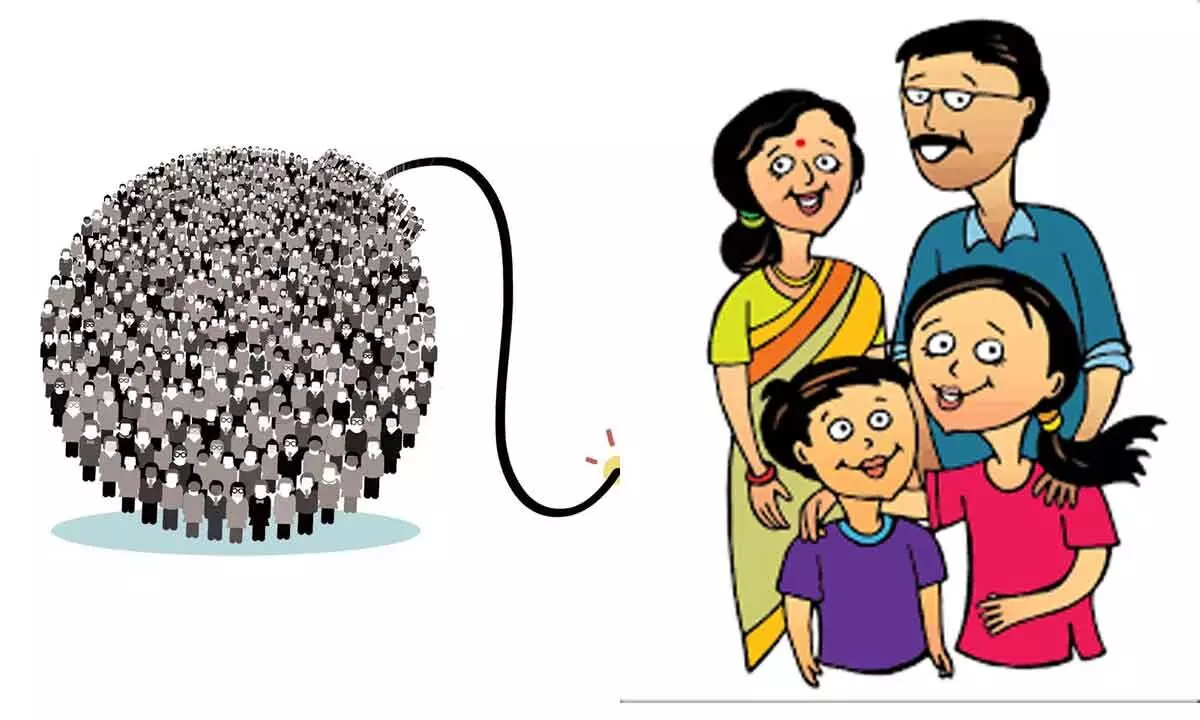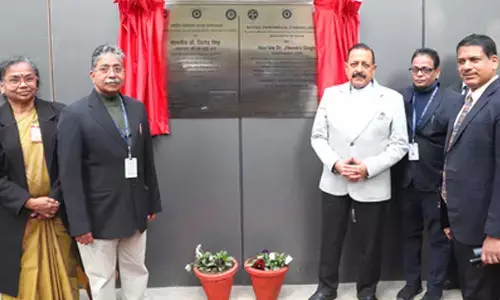Strategic imperative of small family for India

The cancer of over population growth must be cut out, otherwise we will push ourselves into oblivion
The economic development of a country begins and ends with its people. People are a huge asset to their country. But anything in excess only causes damage, so is with population.
India is one-third the size of the United States. But one-sixth of humanity live here. It is the second most populated nation on earth after China. Alarm bells are rung by UN that it would be exceeding China by 2023. According to earlier reports it was thought that India would become the most populous nation by 2040.
Throughout the 20th century, India has been in the midst of demographic transition. At the beginning of the century, endemic diseases, periodic epidemics and famines kept the death rate high enough to balance out the high birth rate. The increasing impact of curative and preventive medicines, especially mass inoculations brought a steady decline in the death rate, which is a feather in the cap for any country, with the result that by mid-90's the estimated birth rate had fallen and the estimated death rate too had fallen. The average population density of India is much higher than that of any other nation if compared in size and land mass. Every 5th baby born in the world is an Indian. The infant mortality rate tends to be high. Being uncertain that their infants would survive, parents tend to produce more in the hope that at least two-some will survive to adulthood.
Infra, natural resources under severe strain
Population growth strains infrastructure and natural resources. India does not have enough schools, hospitals or sanitation facilities to meet the needs of its people in spite of many initiatives by the state and the central governments and NGOs. Forests, water supplies and agricultural lands are shrinking at an alarming rate. One consequence of a low birth rate is an increasingly older population. In the 90's roughly around 7% of population was over 60 years of age. But this rate is expected to double by 2030. Due to availability of life-saving drugs, awareness among people and personal health care added to the life expectancy among senior citizens. Population has soared with developments in technology and medicine that has greatly reduced infant mortality and significantly increased the life span of the average individual. As a result of focus on pre- and post- natal care, sensitivity towards female infanticide, ban on pregnancy termination, more children are living and they are living longer. Infant mortality has fallen considerably.
One of the paradoxes of population control is that the overall population can continue to rise even when fertility rates drop below 2 children. The reason for this demographic surge can be attributed to the 'baby boom' of the 50's and 60's.
Pioneer of birth control movement in India
India's experiments with fertility control programmes go back to the year preceding independence and presently experts say that not only most targets have been met but also the demographic situation is at an advantageous level. In fact, India was the first country in the world to have launched a national programme for family planning in 1952. In articles and publications detailing the history of family planning in India one name remains more or less missing, it is that of Dhanvanthi Rama Rau, a 1959 Padma Bhushan awardee, an Indian Birth Control activist and founder and president of the Family Planning Association of India. The forgotten figure in history believed from very early on, that it was imperative and necessary that women be freed from the shackles of forced maternity and undesired parenthood. She believed that birth control is the means by which woman attains basic freedom. She was responsible for half a million men getting voluntary vasectomies. Years before India began leading by example, many activists in the country dedicated their lives to championing adequate family planning for a growing population like ours. Education of both men and women is a wonderful contraceptive.
Dhanvanthi championed women's reproductive rights. When Mahatma Gandhi opposed birth control and believed in self -control, she designed our family planning policy and advocated the use of artificial methods for birth control. Lower fertility can be good for economic growth and society. When the number of children a woman can expect to bear in her life time falls from high levels of three or more to a stable rate of two, a demographic change surges through the country for at least a generation. Children are scarcer, the elderly are not yet numerous and the country has a bulge of working age adults: "The demographic dividend," a kind of a blessing in disguise, if the country grasps this one oft chance for productivity gains and investment, economic growth can jump by three-fold.
First step towards gender equality
India needs sensitized ways of population control like awareness on family planning, contraception, awareness on health adversities due to less gap between children, stress on education of women and economic and social pressures of a large family. Birth control is the first important step woman must take toward the goal of her freedom. It is the first step she must take to be man's equal. It is the first step they must both take toward human emancipation.
Indian primary resource is its people. The growing population can be advantageous to India if planned well as we possess the youngest global population. A little more than 40% of our population is below 18 years. That means most of them have a preponderance of their working years ahead of them. This population can add to nation-building and economy if provided with the right skills, education and employment.
Slower population growth would reduce the pressure on fragile environment and conserve unpriced resources. Over population is a hindrance in the path of India's economic growth and development. A big number still remains unskilled, illiterate which together causes hurdles to their individual growth and altogether to nation's economic development. The cancer of over population growth must be cut out, otherwise we will push ourselves into oblivion.
Despite the introduction of aggressive family planning programmes, the population is still rising at high rates. In most places the results have been achieved without coercion. The phenomena have been attributed to massive education campaigns, more clinics, inexpensive contraception and improving the status and education of women. In the past lots of children may have been an insurance policy against old age and a means of working the farm but for rising middle class and working people having too many children is an impediment financially in the economic growth of the family.
There is scarcity of our natural resources. Air, water, land, sea and forests are over- burdened, fully utilized to the brim and are choked. Conservation of these resources is essential for the survival of any life on the earth. There is an imperative need to encourage people to have a small family, 'Hum do Hamare do.'
Incentives and concessions in medical and education, tax benefit schemes and priority in these schemes is a must to encourage a small family. Withdrawal of all these benefits for those who don't follow and adhere to the small family norm is a necessity. Population explosion will cause unforeseen challenges and problems to the future generations. In the words of Prime Minister Modi, keeping one's families small is, "an act of patriotism and those who do so deserve our respect and need to be felicitated."














